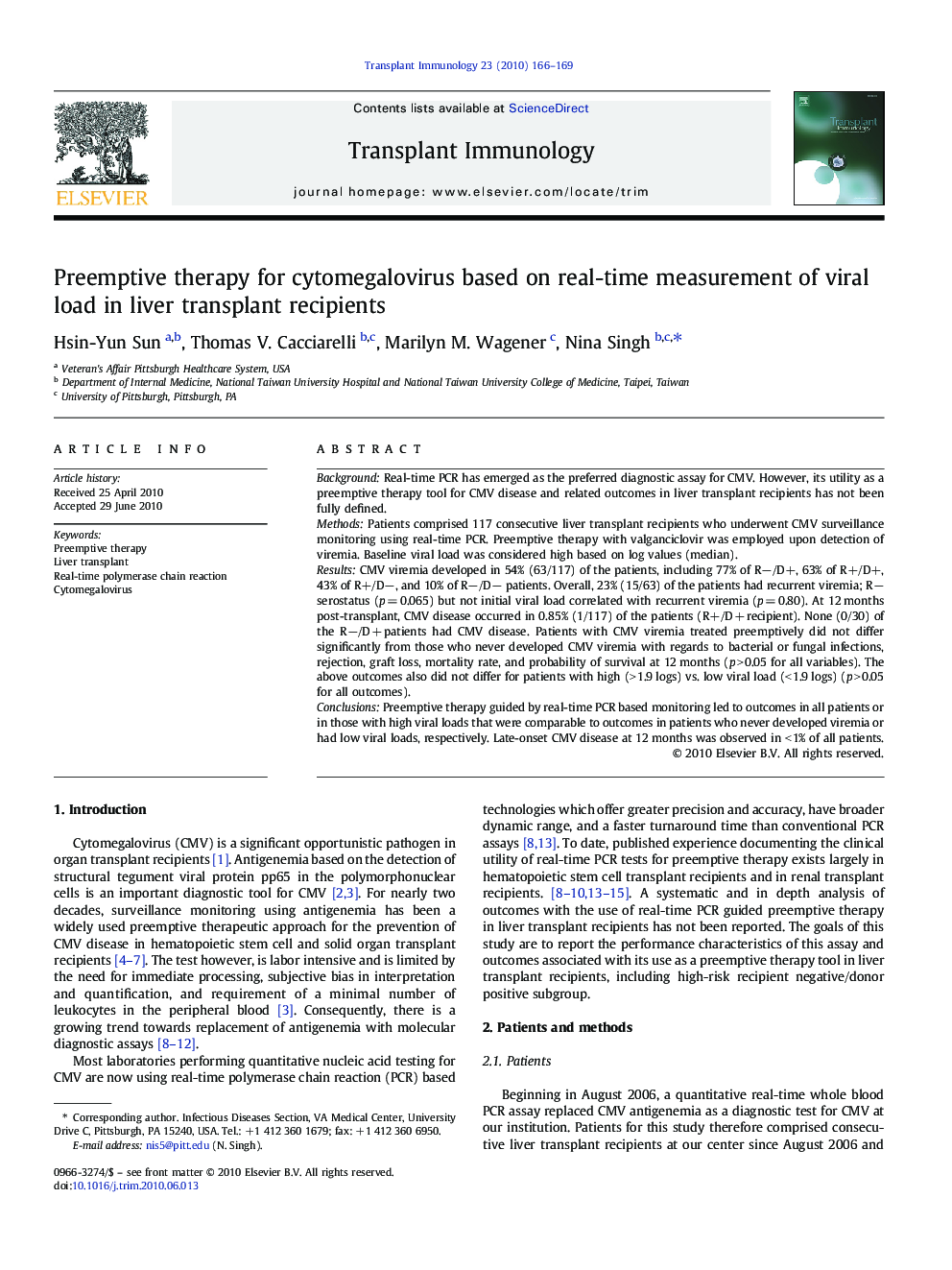| Article ID | Journal | Published Year | Pages | File Type |
|---|---|---|---|---|
| 3392341 | Transplant Immunology | 2010 | 4 Pages |
BackgroundReal-time PCR has emerged as the preferred diagnostic assay for CMV. However, its utility as a preemptive therapy tool for CMV disease and related outcomes in liver transplant recipients has not been fully defined.MethodsPatients comprised 117 consecutive liver transplant recipients who underwent CMV surveillance monitoring using real-time PCR. Preemptive therapy with valganciclovir was employed upon detection of viremia. Baseline viral load was considered high based on log values (median).ResultsCMV viremia developed in 54% (63/117) of the patients, including 77% of R−/D+, 63% of R+/D+, 43% of R+/D−, and 10% of R−/D− patients. Overall, 23% (15/63) of the patients had recurrent viremia; R− serostatus (p = 0.065) but not initial viral load correlated with recurrent viremia (p = 0.80). At 12 months post-transplant, CMV disease occurred in 0.85% (1/117) of the patients (R+/D + recipient). None (0/30) of the R−/D + patients had CMV disease. Patients with CMV viremia treated preemptively did not differ significantly from those who never developed CMV viremia with regards to bacterial or fungal infections, rejection, graft loss, mortality rate, and probability of survival at 12 months (p > 0.05 for all variables). The above outcomes also did not differ for patients with high (> 1.9 logs) vs. low viral load (< 1.9 logs) (p > 0.05 for all outcomes).ConclusionsPreemptive therapy guided by real-time PCR based monitoring led to outcomes in all patients or in those with high viral loads that were comparable to outcomes in patients who never developed viremia or had low viral loads, respectively. Late-onset CMV disease at 12 months was observed in < 1% of all patients.
